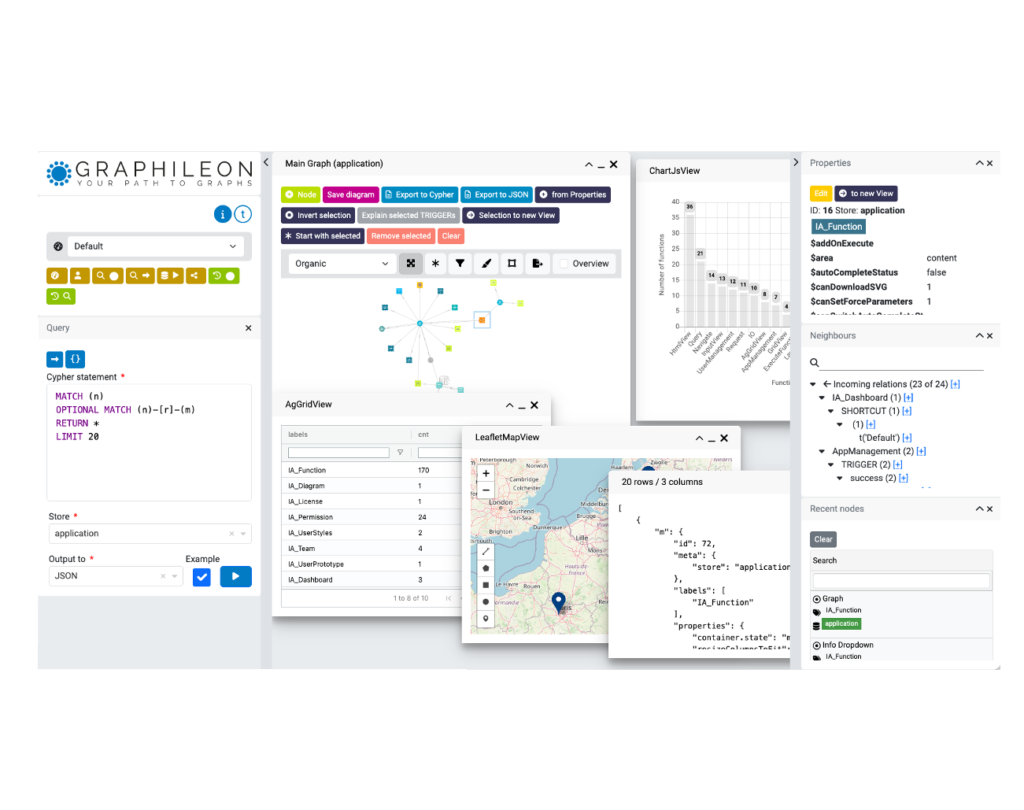Graphileon releases version 3.0, packed with new stuff!
Today, after many months of hard work, we are proud to release Graphileon 3.0. In this release, we put a lot of new functionality as well as many improvements. We also made Graphileon available on AWS, with a new licensing model that is based on functionality. The new functionality includes:
Permissions
Graphileon now offers granular permissions at the application level. You can use them to grant/deny access to both data and functions. For graph databases with Cypher support, you can grant or deny permissions using Cypher statements that Graphileon evaluates during runtime.
We also added TeamEditView and PermissionEditView functions to facilitate the management of teams and permissions.
Dynamic batch triggers and context menu options
You can now use the function model to hide or disable batch triggers and context menu options. For instance, enable a batch trigger that fires when a user selects multiple rows in a grid, or create context menu options that only appear for specific node or relation types.
Graphileon as an API endpoint
Graphileon can now serve as an endpoint for API requests. API function nodes can be linked to other Graphileon function (e.g. a Query function) to trigger other actions and customize the response. Graphileon API endpoints support GET, POST, PUT, PATCH and DELETE methods.
Support for RedisGraph
Graphileon 3.0 supports RedisGraph graph databases for both application and data stores.
Graphileon on AWS
The Graphileon 3.0 release is available on AWS. For each of our AWS editions, we provide an AMI to spin up a virtual machine in your AWS environment and connect to your graph databases. All editions have a 5-day trial period and hourly/annual pricing plans.
We decided to change our licensing model for Graphileon AWS editions. Graphileon licenses for AWS editions do not have limits in terms of “graphileons”, but in terms of functionality. This way, users who do not need advanced functions, have more room to build graphy applications. The overview of AWS editions shows which functions are available in which edition.
NOTE: For on-premise installations, we continue to use the pricing model based on “graphileons”.
The full release notes are available here.



 Docker
Docker Cloud
Cloud